Masao Utiyama
Comprehensive Evaluation on Lexical Normalization: Boundary-Aware Approaches for Unsegmented Languages
May 28, 2025Abstract:Lexical normalization research has sought to tackle the challenge of processing informal expressions in user-generated text, yet the absence of comprehensive evaluations leaves it unclear which methods excel across multiple perspectives. Focusing on unsegmented languages, we make three key contributions: (1) creating a large-scale, multi-domain Japanese normalization dataset, (2) developing normalization methods based on state-of-the-art pretrained models, and (3) conducting experiments across multiple evaluation perspectives. Our experiments show that both encoder-only and decoder-only approaches achieve promising results in both accuracy and efficiency.
TikZero: Zero-Shot Text-Guided Graphics Program Synthesis
Mar 14, 2025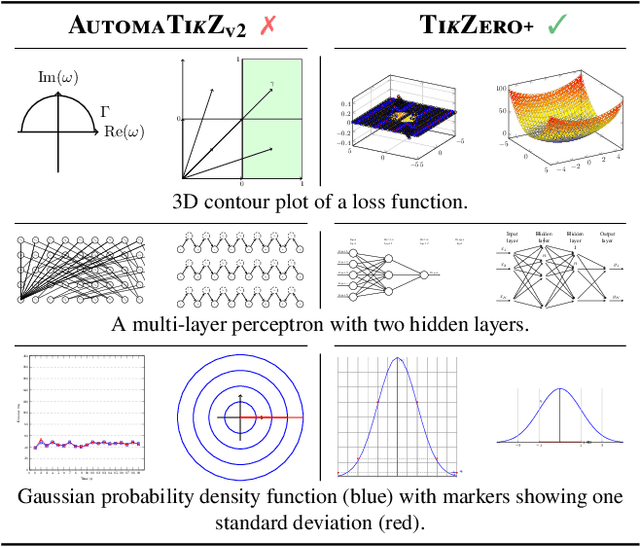
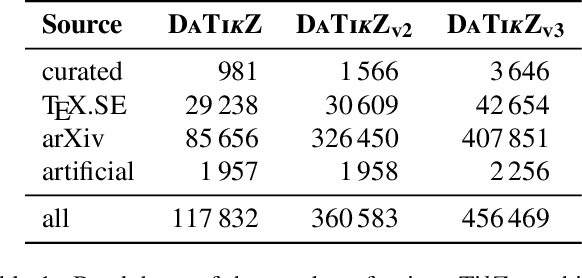
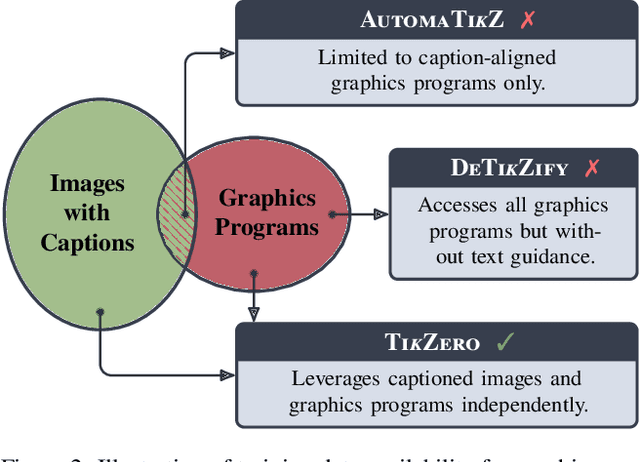

Abstract:With the rise of generative AI, synthesizing figures from text captions becomes a compelling application. However, achieving high geometric precision and editability requires representing figures as graphics programs in languages like TikZ, and aligned training data (i.e., graphics programs with captions) remains scarce. Meanwhile, large amounts of unaligned graphics programs and captioned raster images are more readily available. We reconcile these disparate data sources by presenting TikZero, which decouples graphics program generation from text understanding by using image representations as an intermediary bridge. It enables independent training on graphics programs and captioned images and allows for zero-shot text-guided graphics program synthesis during inference. We show that our method substantially outperforms baselines that can only operate with caption-aligned graphics programs. Furthermore, when leveraging caption-aligned graphics programs as a complementary training signal, TikZero matches or exceeds the performance of much larger models, including commercial systems like GPT-4o. Our code, datasets, and select models are publicly available.
IteRABRe: Iterative Recovery-Aided Block Reduction
Mar 08, 2025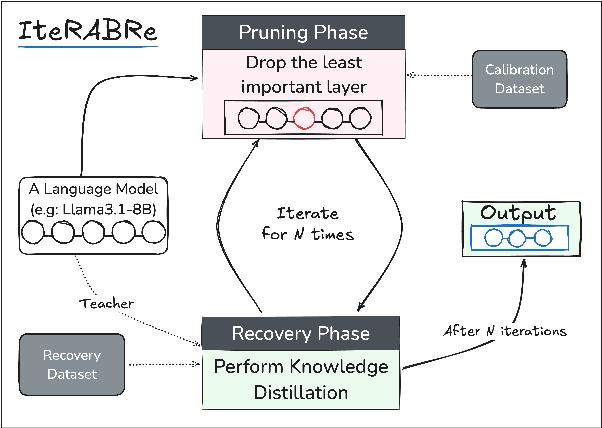
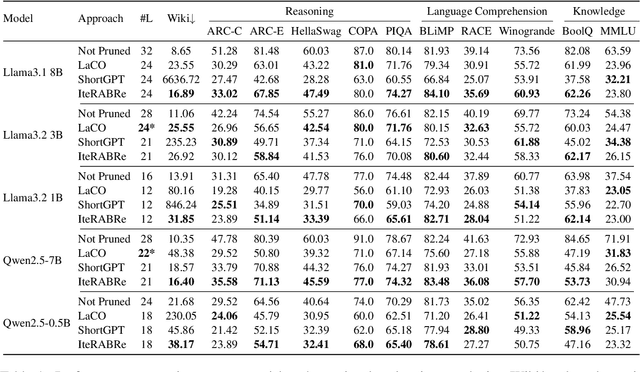
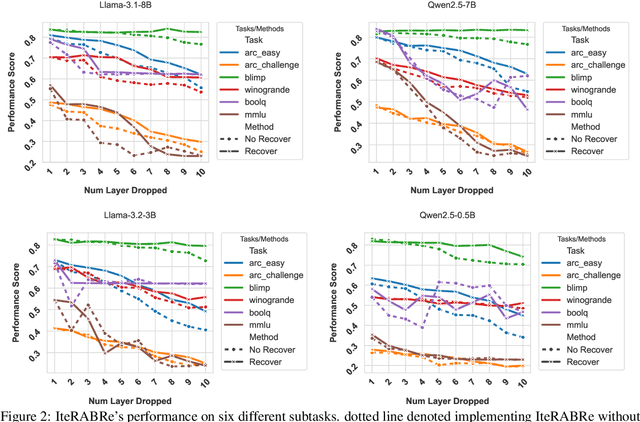
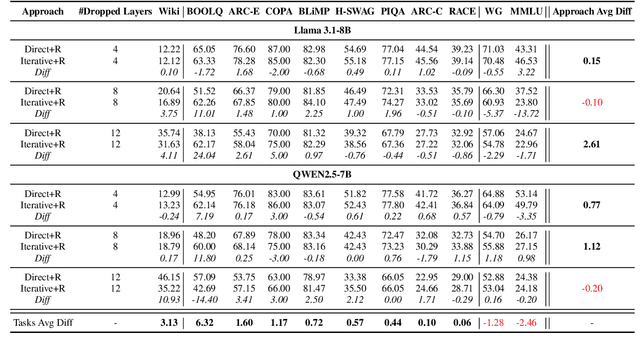
Abstract:Large Language Models (LLMs) have grown increasingly expensive to deploy, driving the need for effective model compression techniques. While block pruning offers a straightforward approach to reducing model size, existing methods often struggle to maintain performance or require substantial computational resources for recovery. We present IteRABRe, a simple yet effective iterative pruning method that achieves superior compression results while requiring minimal computational resources. Using only 2.5M tokens for recovery, our method outperforms baseline approaches by ~3% on average when compressing the Llama3.1-8B and Qwen2.5-7B models. IteRABRe demonstrates particular strength in the preservation of linguistic capabilities, showing an improvement 5% over the baselines in language-related tasks. Our analysis reveals distinct pruning characteristics between these models, while also demonstrating preservation of multilingual capabilities.
Registering Source Tokens to Target Language Spaces in Multilingual Neural Machine Translation
Jan 06, 2025



Abstract:The multilingual neural machine translation (MNMT) enables arbitrary translations across multiple languages by training a model with limited parameters using parallel data only. However, the performance of such MNMT models still lags behind that of large language models (LLMs), limiting their practicality. In this work, we address this limitation by introducing registering to achieve the new state-of-the-art of decoder-only MNMT models. Specifically, we insert a set of artificial tokens specifying the target language, called registers, into the input sequence between the source and target tokens. By modifying the attention mask, the target token generation only pays attention to the activation of registers, representing the source tokens in the target language space. Experiments on EC-40, a large-scale benchmark, show that our method outperforms related methods driven by optimizing multilingual representations. We further scale up and collect 9.3 billion sentence pairs across 24 languages from public datasets to pre-train two models, namely MITRE (multilingual translation with registers). One of them, MITRE-913M, outperforms NLLB-3.3B, achieves comparable performance with commercial LLMs, and shows strong adaptability in fine-tuning. Finally, we open-source our models to facilitate further research and development in MNMT: https://github.com/zhiqu22/mitre.
Improving Language Transfer Capability of Decoder-only Architecture in Multilingual Neural Machine Translation
Dec 03, 2024



Abstract:Existing multilingual neural machine translation (MNMT) approaches mainly focus on improving models with the encoder-decoder architecture to translate multiple languages. However, decoder-only architecture has been explored less in MNMT due to its underperformance when trained on parallel data solely. In this work, we attribute the issue of the decoder-only architecture to its lack of language transfer capability. Specifically, the decoder-only architecture is insufficient in encoding source tokens with the target language features. We propose dividing the decoding process into two stages so that target tokens are explicitly excluded in the first stage to implicitly boost the transfer capability across languages. Additionally, we impose contrastive learning on translation instructions, resulting in improved performance in zero-shot translation. We conduct experiments on TED-19 and OPUS-100 datasets, considering both training from scratch and fine-tuning scenarios. Experimental results show that, compared to the encoder-decoder architecture, our methods not only perform competitively in supervised translations but also achieve improvements of up to 3.39 BLEU, 6.99 chrF++, 3.22 BERTScore, and 4.81 COMET in zero-shot translations.
On Eliciting Syntax from Language Models via Hashing
Oct 05, 2024Abstract:Unsupervised parsing, also known as grammar induction, aims to infer syntactic structure from raw text. Recently, binary representation has exhibited remarkable information-preserving capabilities at both lexicon and syntax levels. In this paper, we explore the possibility of leveraging this capability to deduce parsing trees from raw text, relying solely on the implicitly induced grammars within models. To achieve this, we upgrade the bit-level CKY from zero-order to first-order to encode the lexicon and syntax in a unified binary representation space, switch training from supervised to unsupervised under the contrastive hashing framework, and introduce a novel loss function to impose stronger yet balanced alignment signals. Our model shows competitive performance on various datasets, therefore, we claim that our method is effective and efficient enough to acquire high-quality parsing trees from pre-trained language models at a low cost.
To be Continuous, or to be Discrete, Those are Bits of Questions
Jun 12, 2024Abstract:Recently, binary representation has been proposed as a novel representation that lies between continuous and discrete representations. It exhibits considerable information-preserving capability when being used to replace continuous input vectors. In this paper, we investigate the feasibility of further introducing it to the output side, aiming to allow models to output binary labels instead. To preserve the structural information on the output side along with label information, we extend the previous contrastive hashing method as structured contrastive hashing. More specifically, we upgrade CKY from label-level to bit-level, define a new similarity function with span marginal probabilities, and introduce a novel contrastive loss function with a carefully designed instance selection strategy. Our model achieves competitive performance on various structured prediction tasks, and demonstrates that binary representation can be considered a novel representation that further bridges the gap between the continuous nature of deep learning and the discrete intrinsic property of natural languages.
Centroid-Based Efficient Minimum Bayes Risk Decoding
Feb 17, 2024Abstract:Minimum Bayes risk (MBR) decoding achieved state-of-the-art translation performance by using COMET, a neural metric that has a high correlation with human evaluation. However, MBR decoding requires quadratic time since it computes the expected score between a translation hypothesis and all reference translations. We propose centroid-based MBR (CBMBR) decoding to improve the speed of MBR decoding. Our method clusters the reference translations in the feature space, and then calculates the score using the centroids of each cluster. The experimental results show that our CBMBR not only improved the decoding speed of the expected score calculation 6.9 times, but also outperformed vanilla MBR decoding in translation quality by up to 0.5 COMET in the WMT'22 En$\leftrightarrow$Ja, En$\leftrightarrow$De, En$\leftrightarrow$Zh, and WMT'23 En$\leftrightarrow$Ja translation tasks.
Universal Multimodal Representation for Language Understanding
Jan 09, 2023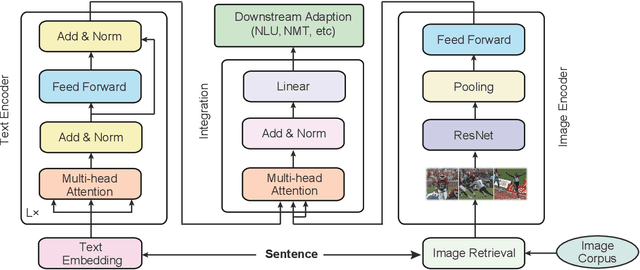

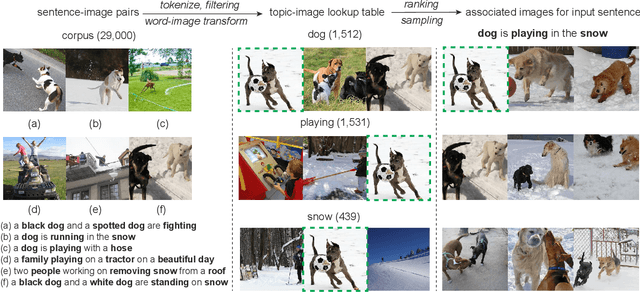
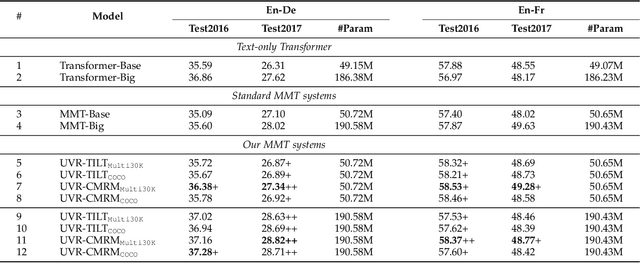
Abstract:Representation learning is the foundation of natural language processing (NLP). This work presents new methods to employ visual information as assistant signals to general NLP tasks. For each sentence, we first retrieve a flexible number of images either from a light topic-image lookup table extracted over the existing sentence-image pairs or a shared cross-modal embedding space that is pre-trained on out-of-shelf text-image pairs. Then, the text and images are encoded by a Transformer encoder and convolutional neural network, respectively. The two sequences of representations are further fused by an attention layer for the interaction of the two modalities. In this study, the retrieval process is controllable and flexible. The universal visual representation overcomes the lack of large-scale bilingual sentence-image pairs. Our method can be easily applied to text-only tasks without manually annotated multimodal parallel corpora. We apply the proposed method to a wide range of natural language generation and understanding tasks, including neural machine translation, natural language inference, and semantic similarity. Experimental results show that our method is generally effective for different tasks and languages. Analysis indicates that the visual signals enrich textual representations of content words, provide fine-grained grounding information about the relationship between concepts and events, and potentially conduce to disambiguation.
Language Model Pre-training on True Negatives
Dec 01, 2022
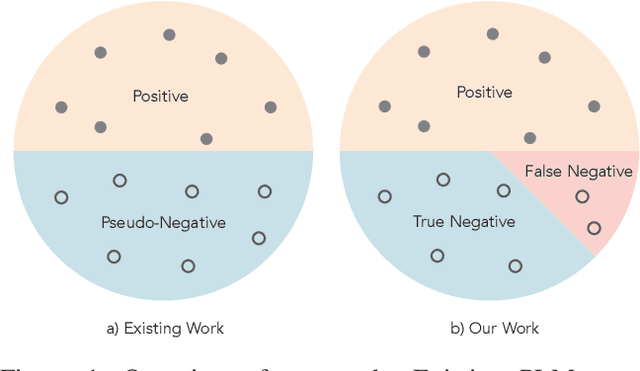
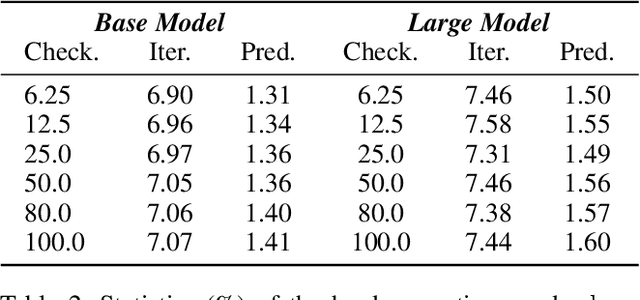

Abstract:Discriminative pre-trained language models (PLMs) learn to predict original texts from intentionally corrupted ones. Taking the former text as positive and the latter as negative samples, the PLM can be trained effectively for contextualized representation. However, the training of such a type of PLMs highly relies on the quality of the automatically constructed samples. Existing PLMs simply treat all corrupted texts as equal negative without any examination, which actually lets the resulting model inevitably suffer from the false negative issue where training is carried out on pseudo-negative data and leads to less efficiency and less robustness in the resulting PLMs. In this work, on the basis of defining the false negative issue in discriminative PLMs that has been ignored for a long time, we design enhanced pre-training methods to counteract false negative predictions and encourage pre-training language models on true negatives by correcting the harmful gradient updates subject to false negative predictions. Experimental results on GLUE and SQuAD benchmarks show that our counter-false-negative pre-training methods indeed bring about better performance together with stronger robustness.
 Add to Chrome
Add to Chrome Add to Firefox
Add to Firefox Add to Edge
Add to Edge